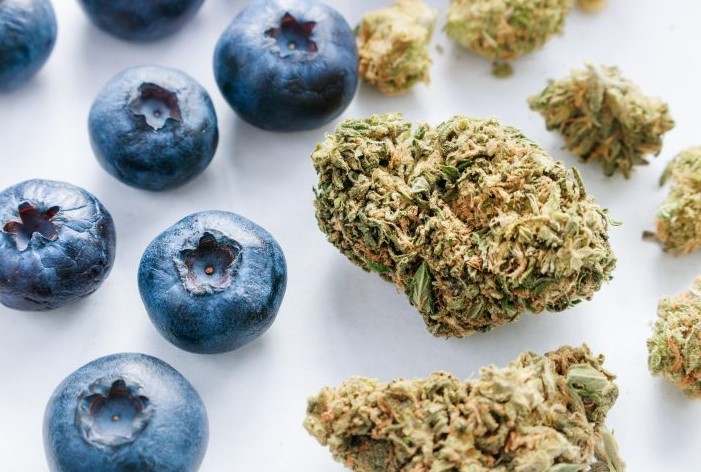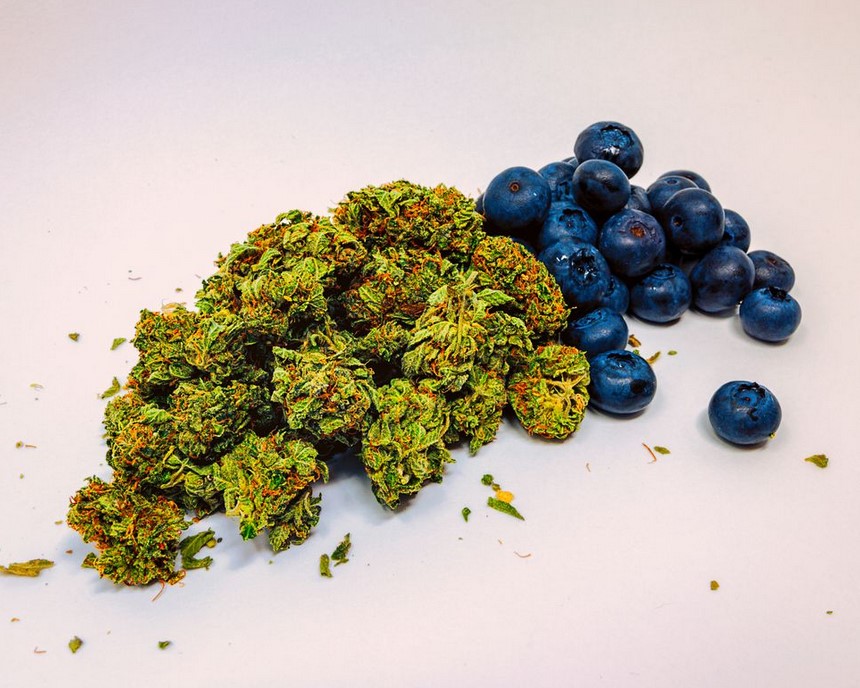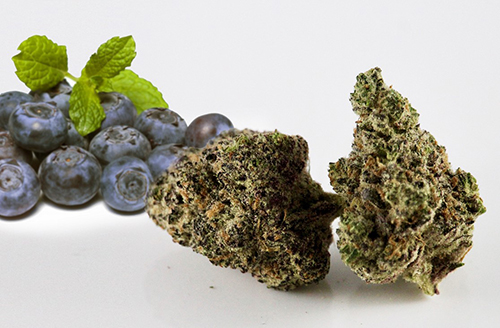-
×
 NFT
1 × $0.01
NFT
1 × $0.01 -
×
 Vanilla Backwood 5 Pack Cigars
1 × $25.00
Vanilla Backwood 5 Pack Cigars
1 × $25.00 -
×
 Cognac XO Backwoods Cigars Pack
1 × $25.00
Cognac XO Backwoods Cigars Pack
1 × $25.00
Cannabis Wiki
Tips for Growing Blueberry Cannabis
Blueberry marijuana is a strain that lives up to its name. It’s sweet and tastes just like blueberries! However, there are certain challenges associated with cultivating the Blueberry marijuana strain that some growers are unaware of. These include lengthy flowering periods, nutrient requirements, and training methods for ensuring the plant flourishes.
It’s important to feel confident that you’ll get a yield, but it’s also worth the effort. Blueberry has a long history, distinctive flavor, and enormous potential for producing high-quality bud. Let’s look at eight pointers to help you grow Blueberry properly.
Tip #1: Strain Review – Understand Blueberry’s Genetics
Blueberry is a North American strain developed by breeder DJ Short. DJ Short was working with an intriguing mix of landrace strains. These are locally cultivated varieties such as Afghani from Afghanistan or Purple Thai from Thailand. DJ Short helped bring them to the international stage, despite previously being restricted to their region. To create his ideal variety, he used a diverse range of breeding initiatives. As a result, Blueberry was born.
Blueberry is prized not just for its high THC content, but also for its delicious blueberry flavor.
Blueberry has a unique flavor and odor that is reminiscent of fresh blueberries. Blueberry is frequently taken as a nightcap or ahead of time to unwind. It’s well-known for its narcotic effects, which are dreamy in nature.
Blueberry indicas have a negative reputation for causing couch lock, but Blueberry doesn’t have any of it. Rather, you get a calm, peaceful euphoria that makes you feel ready to enjoy a wonderful night’s sleep. Many people use it as a pain medication or a relaxant. Follow the link below to read our in-depth Blueberry strain review.

Tip #2: Growing Difficulty – How Hard Is Blueberry to Cultivate?
Blueberry is a simple strain to cultivate. There are a few minor oddities, such as the specific kind and quantity of nutrients required. Blueberry also has a few unique pruning methods that may be used to boost yield. If you want to produce a strain with little effort and no yield concerns, Blueberry is an excellent choice.
However, you must understand a few techniques to get the most from it. These techniques may also improve the bud’s overall quality.
Tip #3: Growing Techniques
Blueberry is a strain that thrives best when exposed to direct sunlight, and it truly shines in the open air. It can become somewhat faint, however, during the early phases of development. As a result, it’s a good idea to start it in your greenhouse as soon as possible and then transplant outdoors after the final frost has passed.
Trimming, or ” topping,” your plants is an uncommon approach to increase yield. This entails cutting away at the plant’s extremities as it develops. The goal is to turn the developing Blueberry plant into a bush. If it creates this shape, the plant puts extra effort and resources into producing more buds. It may also save you space by growing smaller.
Pruning the plant on a regular basis will also aid in the prevention of powdery mildew. Powdery mildew adores to attack top-heavy plants. Make sure they’re trimmed frequently and supplied with enough nutrients to ensure a high yield and a fertile plant to keep them happy.
Tip #4: Increasing Blueberry’s Yield
Blueberry cannabis has an excellent track record for producing exceptionally high yields in comparison to other strains. A lot of it is the bushy form, as you’ve probably guessed by now.
It can yield up to 25 ounces of bud per plant indoors and up to 18 ounces per square meter planted outside.
You can shape Blueberry into a bush by hand. If you perform it correctly, your plants will produce far more bud than they would if left unpruned. Many first-time growers are surprised by this high yield. However, several factors influence whether or not you get a lot of return. You must also feed this strain on a regular basis.
Tip #5: Feeding Blueberry
Blueberry is a hardy strain that should be grown in your greenhouse and then transplanted outdoors. As a result, you may have prepared your soil in advance. Before progressing to outdoor production, enrich the soil with necessary mineral nutrients.
Blueberry has a higher nitrogen requirement than other strains. When you transplant a plant from an indoor environment to the outdoors, this becomes even more important. Outside temperatures vary, and there is a shift from one constant temperature to several fluctuations. As a result, your plants will require a lot of nutrients, especially as they strive to reach greater heights.
Make sure your plants are firmly planted in the ground. When they begin to blossom, litter the top of the soil with worm castings. Take a look at the earth behind an earthworm’s trail to see if it’s weird. It leaves behind a nutritional rich waste product as it eats through dirt and compost, which we term worm casting. Because it went though the worm’s digestive system, this is naturally aerated.
Bat guano can be added to the soil after the worm casting to ensure that the plants are as nutrient-dense as possible. This is, of course, another animal’s waste, but it comes from bats! Bat guano is high in phosphate and nitrogen because of all of the extra nutrients consumed by the flying animals. It may seem rather pungent, but your Blueberry plants will adore it.
Don’t worry about strange smells or anything else affecting the quality or flavor of your marijuana. Blueberry is a strong plant, and no matter what you feed it, it will give you the same pleasant taste.
Tip #6: Growing Outdoors/Indoors

Blueberry is a versatile strain that may endure surprisingly chilly temperatures in comparison to what you’d anticipate. It’s an excellent plant for growing in northern regions, such as the Northeast of the United States or the chillingly cold Midwest.
Since it thrives on sunshine and has a passion for nature, blueberry is best cultivated outside. If you cultivate it entirely indoors, the quality and quantity of buds will not be nearly as good. As a result, you should place it in the garden to enjoy some of the finest marijuana imaginable.
Growing Blueberries in soil is the most common option, whether you grow indoors or outdoors. For your Blueberry plants, ‘super soil’ from shops contains a comprehensive mix of nutrients. Greensand is becoming increasingly popular as an amendment to marijuana plant dirt. It’s a mineral glauconite recovered from the ocean floor by mining.
It’s a nutrient-dense, blueish-green plant that contains phosphorus, potassium, silica, and a slew of trace minerals. It should be added to the top dressing and root zone during the growing season. This is due to the fact that it takes time for it to become bioavailable. It gives nutrients to assist your plant’s immune systems and metabolic processes.
Tip #7: Blueberry Flowering Time
Blueberry is a fast-flowering variety. On average, it takes 7-9 weeks for this plant to blossom. Fresh Blueberry buds should be expected in less than two months in some cases. This strain has several benefits, but its short flowering period adds to its excellent reputation. You not only get high-quality, stress-relieving cannabis quickly, but you also get it promptly.
Tip #8 Climate for Growing the Blueberry Strain
Blueberry is a strain that prefers a more temperate climate than other strains. Its ideal temperature range is 65 to 80 degrees Fahrenheit, albeit it can tolerate colder conditions surprisingly well.
Blueberry is a popular choice for people living in the American Midwest or northeast, since it can withstand lower nighttime temperatures.
The ideal range is 65 to 75 degrees Fahrenheit, although germination rates are best at temperatures between 60 and 70 degrees Fahrenheit. The optimum temperature for germination is between 60 and 70 degrees Fahrenheit, with 65 degrees being the minimum recommendation. However, it can withstand temperatures as low as 45 degrees Fahrenheit without significantly affecting the yield.
Make sure it won’t face those types of temperatures for more than a few nights in a row. Even the hardiest plant can’t survive long-term exposure to freezing temperatures without dying or giving poor yields.
Final Thoughts on Growing Blueberry Marijuana
Blueberry Cannabis is a strain that you can count on. It’s dependable, long-lasting, and hardy. With a surprisingly high yield, you may expect to have more buds than you know what to do with.
It’s not difficult to keep yourself under control. Finding a greenhouse is the most difficult part, to begin with. If you can locate a location that has both of these qualities, you’ve already won half the battle.
Blueberry is a wonderful strain for anyone who wants to cultivate their own marijuana. You’ll need the space to grow it. Rather than growing it as a tall plant, cultivate it in a round, bush-shaped pattern outside and inside, and you’ll get better yields. To get the most out of your Blueberry strain, you’ll need lots of room.
Blueberries produce decent yields, have a wide temperature tolerance, and may be cultivated in both worm and bat dung. When you finish harvesting the Blueberry strain, you’ll be relaxed and euphoric in no time.


